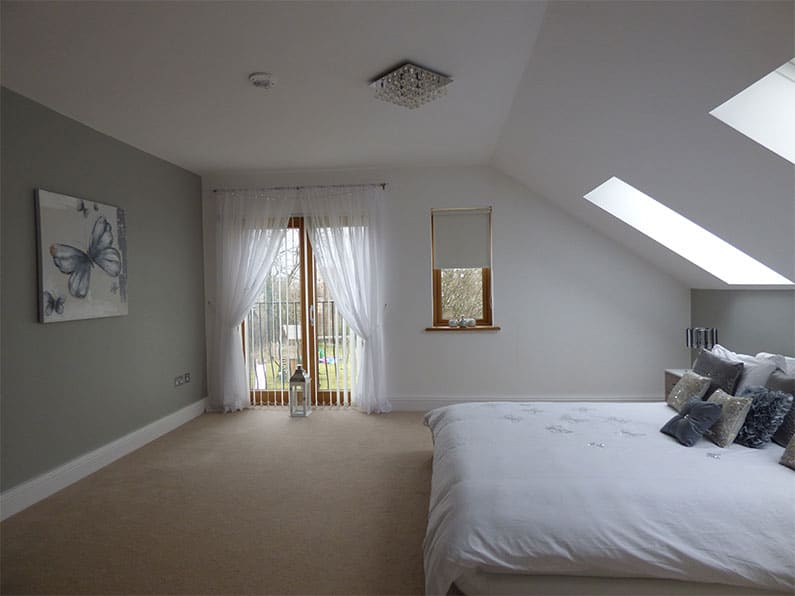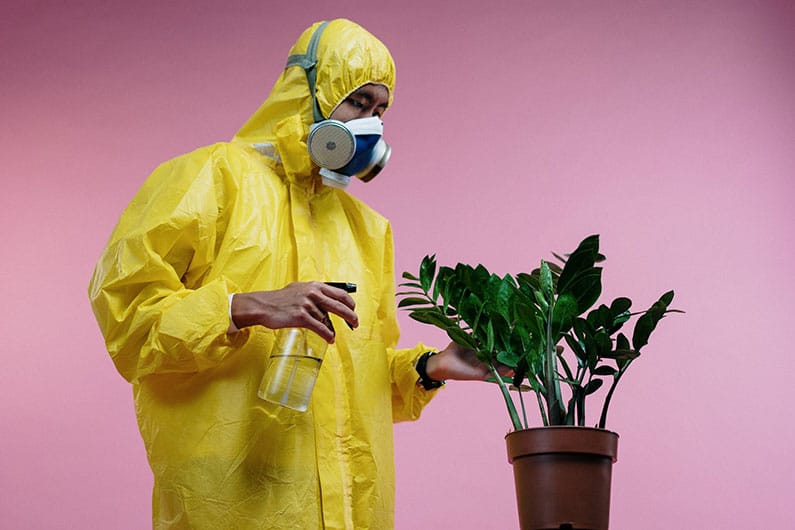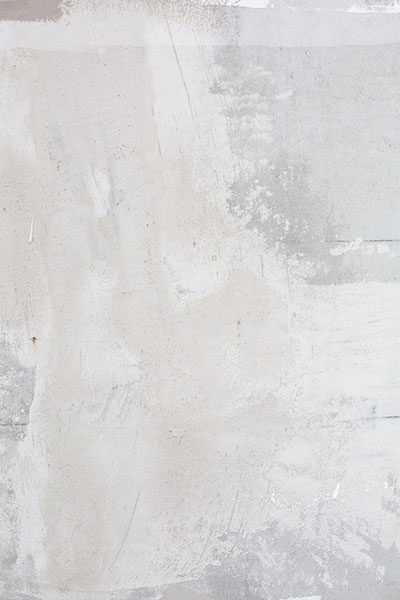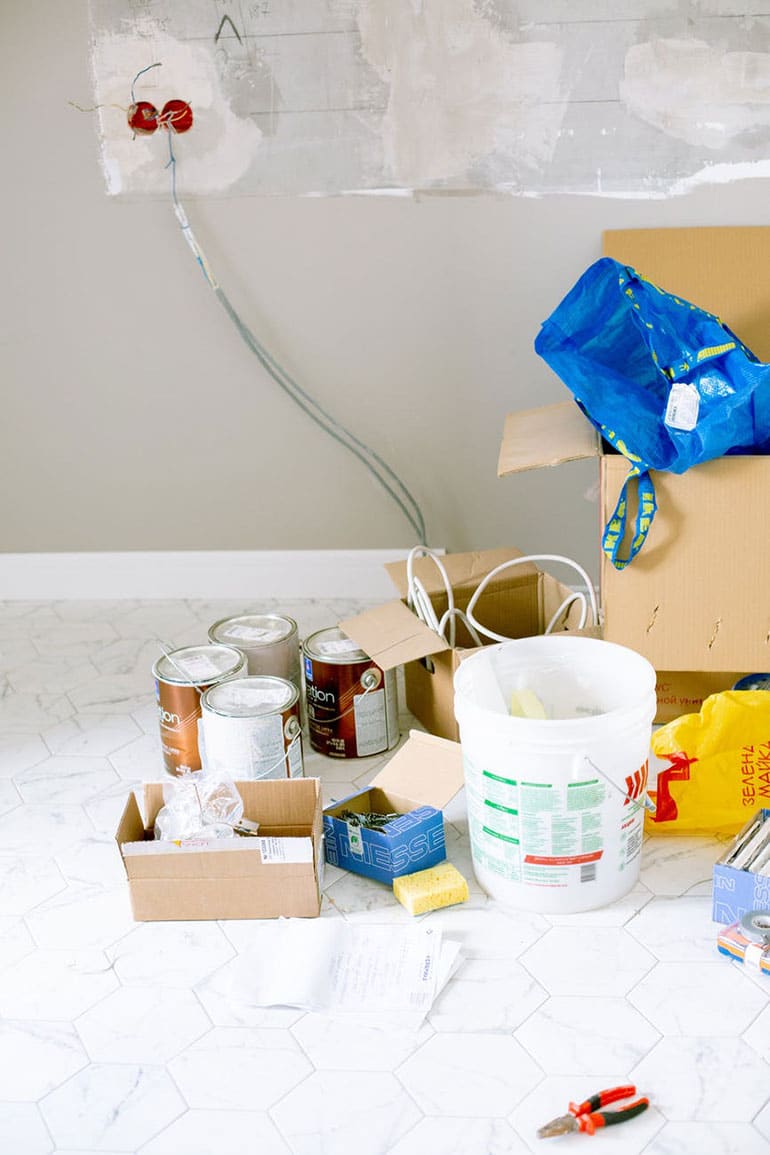Learning how to spray paint a house interior is not as hard as it might appear at first. In this article, let me show you how to accomplish your goal safely and to a brilliant finish.
This guide will demonstrate how to spray paint inside a house and show you each step along the way. Every action will be properly detailed and labeled for your convenience.

What Do I Need?
Before you start, make sure you have everything you need for spray painting your home interior.

A paint sprayer.
Compatible paint (make sure you check the instructions).
Dust sheets (cotton for the floor, polythene sheets for other surfaces).
Masking tape.
Safety glasses.
Painting overalls.
Shoe coverings.
Breathing mask, respirator, or dust mask.
Gloves.
Paint strainer or sieve.
How to Spray Paint a Room
Now into the step-by-step guide to how to paint the inside of a house, which is set in stages to help you complete each one with confidence. Before you begin, make sure you are keeping safe while painting inside. Wear your protective equipment at all times when within the painting area, until the paint has completely dried.
Room Preparation
- You need to clear the area you wish to spray paint. Remove everything that can be moved out… unless you want to spray your furniture!
- Make sure the room is well ventilated when using any kind of paint — keep windows and doors open if possible.
- Once you have cleared the room of everything that can be removed, place everything else in the center of the room, and make sure you cover all the objects for their protection.
- It’s now time to begin masking everything else in the room. Make sure you cover all fittings and outlets with masking tape to prevent getting paint into the electrics.
- Use masking tape and polythene sheets to cover your floor, windows, and doors, sticking it down on all edges. Make sure you don’t leave any gaps and don’t overlap into any area you wish to paint.
- Clean the surface of any dirt and grime which could prevent the paint from sticking to the wall. At this time I also recommend that any damage or rough areas be smoothed off. This allows the paint to provide an even finish to the surface you’re covering. I know this can be a pain, but it’s worth it in the end.

Preparing Your Paint

When you are using a paint sprayer to paint an interior room, it’s best to prepare your paint, to prevent any problems with the quick painting process. As long as you are using paint that can be used in a paint sprayer, the following steps should help avoid any issues.
If the tin has been previously opened, it is best to sieve the paint, in order to remove any dry paint that has found its way into the solution, as well as any clumps that may have formed. This can be done with a paint strainer or a large sieve. You don’t want those bits ruining your hard work.
Once your paint is free of any clumps, make sure that it is free flowing and doesn’t have any globules while it pours. Now it is time to test your paint with your paint sprayer.
Fill the sprayer to recommended levels, and spray it onto cardboard (or even just old paper to test the spray). If the paint sprays nice and evenly without any sputtering or dripping, then you are free to start painting your interior space.
If, however, the spray is not even and does sputter and clog, don’t panic. This simply means that the paint is too thick and just needs to be diluted slightly. Learn how to thin paint for sprayer here.
Spray Painting Your Interior Room
Now it’s time to finally begin spraying your interior room.
- Aim the nozzle of the paint sprayer to the surface of your desired area, keeping a distance of around 8 to 12 inches, to prevent the paint from being applied too thickly.
- Starting with the room’s central light source (this will allow you to get the best visual as to how each coat of paint will look when applied), begin spraying in smooth, even, vertical motions.
- After each stroke, move to the next part of the wall as you complete each line. Overlap 30 – 50 percent of the previous section, to create a smooth uniform coverage along the entire surface.
- When reaching a corner or border, aim the paint sprayer directly into the area. This will allow the paint to spread evenly and provide a balanced coat on both sides.
- For harder to reach areas, such as ceilings, use an extender nozzle to make them easier to paint. When using such tools, always follow the manufacturer’s instructions.
- Once you have finished, allow the paint to fully dry before choosing whether the desired color has been achieved. If you need extra coats, simply repeat the process as many times as you wish.
All that’s left to do now is clean up — a tedious but important step.
Cleaning Your Paint Sprayer
You have successfully spray painted your room, now it’s time to clean your paint sprayer. It might seem like a tiresome task to do, but this will keep your paint sprayer in good condition for the next time you need to use it.
You can find a complete guide to cleaning your paint sprayer by clicking here.
Once the sprayer is fully cleaned, pack the tools together and follow the recommended storage instructions.
Removing Preparation Materials
It’s now time to clear away all that you have laid down. Firstly, I recommend that you start with the masking tape that has covered the borders of your interior. Peel the tape off slowly in easy, light motions. If the tape is stuck, it’s best to use a sharp utility knife to very carefully cut away any parts that can’t be removed easily.
Remove the coverings that were protecting windows and doors, using similar methods as the masking tape before. Open windows and doors fully, allowing the air to circulate.
It’s time to clear away all the other odds and ends. Paint and other solutions that can not be stored for further use should be disposed of safety. Finally, take up the dust sheets and place them into storage or dispose of them in a safe and secure way.











